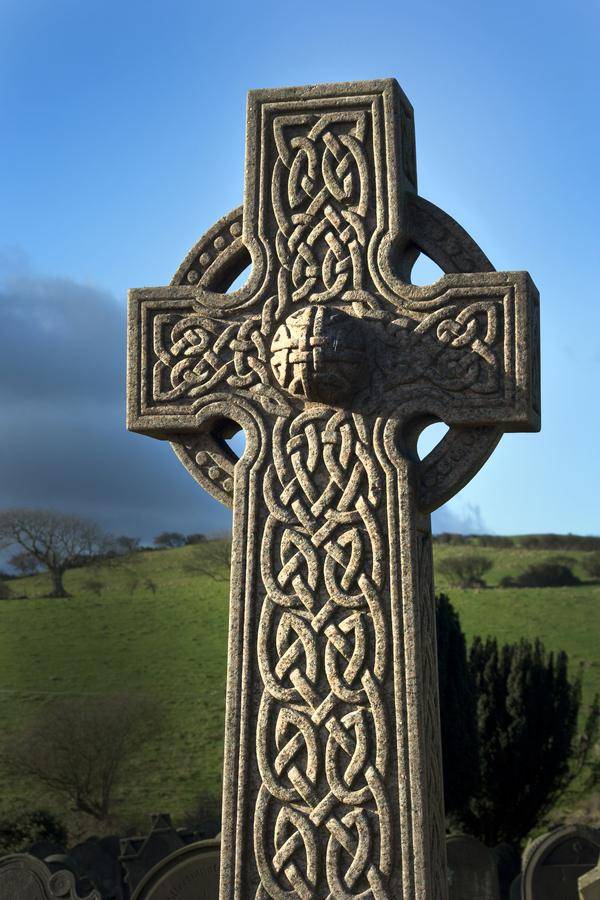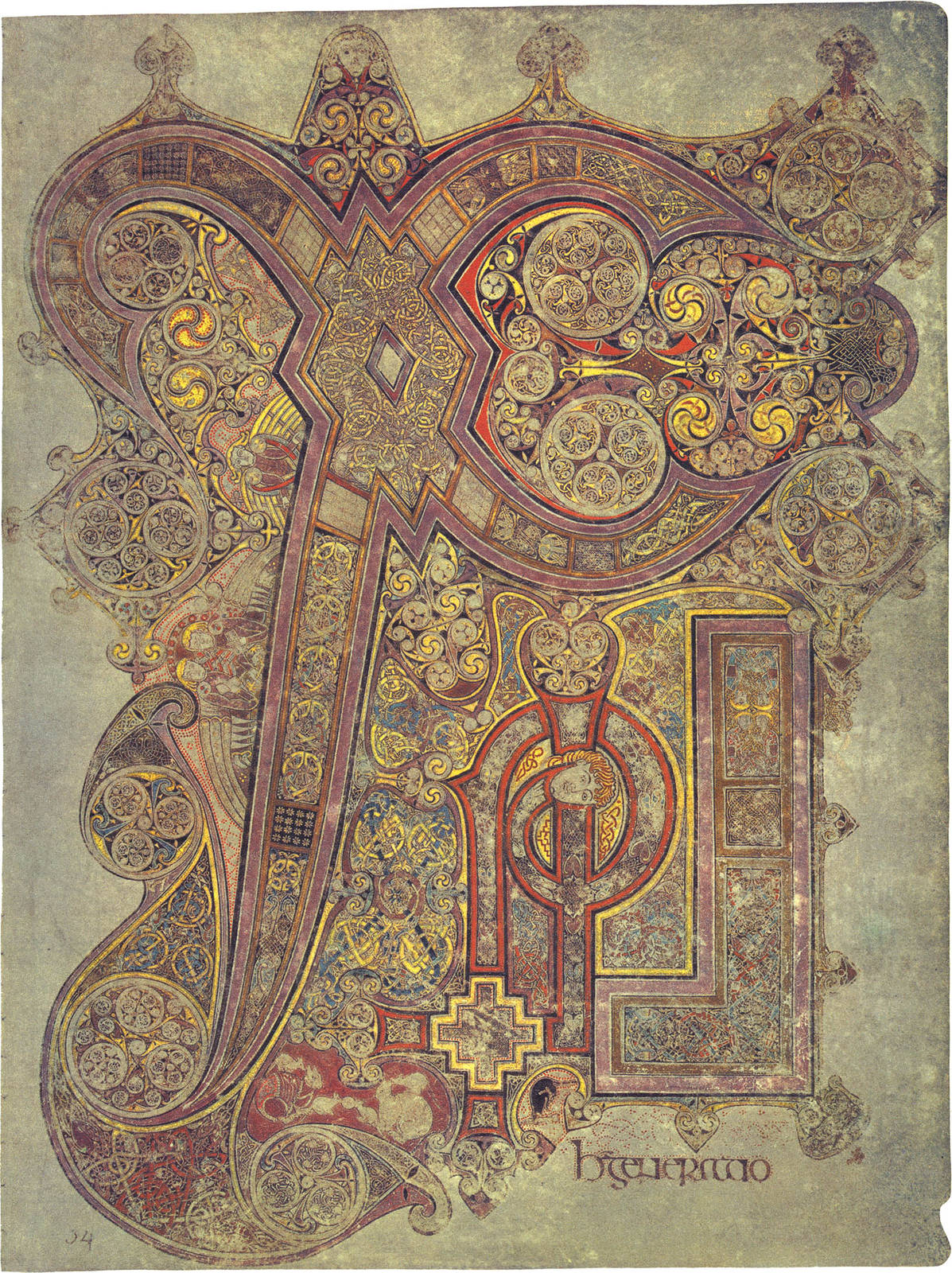Celtic knots and their history

Celtic knots, (Irish: snaidhm Cheilte) are a variety of knots and stylized graphical representations of knots used for decoration, used extensively in the Celtic style of Insular art. These knots are most known for their adaptation for use in the ornamentation of Christian monuments and manuscripts, such as the Book of Kells and the Lindisfarne Gospels. Most are endless knots, and many are varieties of basket weave knots.
Stone Celtic crosses, such as this, are a major source of knowledge regarding Celtic knot design.

The decorated initial
Almost all of the pages of the Book of Kells contain small illuminations like this decorated initial:

History
The use of interlace patterns had its origins in the artwork of the late Roman Empire. Knot patterns first appeared in the third and fourth centuries AD and can be seen in Roman floor mosaics of that time. Interesting developments in the artistic use of interlaced knot patterns are found in Byzantine architecture and book illumination, Coptic art, Celtic art, Islamic art, Medieval Russian book illumination, Ethiopian art, and European architecture and book illumination.
Spirals, step patterns, and key patterns are dominant motifs in Celtic art before the Christian influence on the Celts, which began around 450. These designs found their way into early Christian manuscripts and artwork with the addition of depictions from life, such as animals, plants and even humans. In the beginning, the patterns were intricate interwoven cords, called plaits, which can also be found in other areas of Europe, such as Italy, in the 6th century. A fragment of a Gospel Book, now in the Durham Cathedral library and created in northern Britain in the 7th century, contains the earliest example of true knotted designs in the Celtic manner.
Examples of plait work (a woven, unbroken cord design) predate knot-work designs in several cultures around the world but the broken and reconnected plait work that is characteristic of true knot-work began in northern Italy and southern Gaul and spread to Ireland by the 7th century. The style is most commonly associated with the Celtic lands, but it was also practiced extensively in England and was exported to Europe by Irish and Northumbrian monastic activities on the continent. In modern times Celtic art is popularly thought of in terms of national identity and therefore specifically Irish, Scottish or Welsh.
The Trinity Knot (Triquetra)
The Trinity Knot (or Triquetra) is a trefoil knot. It has come to refer exclusively to a particular more complicated shape formed of three vesicae piscis (the leaf-like shape in between two equal diameter circles when both centers are on the circumference of the other circle), sometimes with an added circle in or around the three lobes. Also known as a "trinity knot" when parallel doubled-lines are in the graph, the design is used as a religious symbol adapted from ancient Celtic images by Christianity. It is similar to Odin's symbol, the valknut.
Here are some trinity knot examples from our collection:
Ancient Usage as Celtic Art
The triquetra is often found in insular art, most notably metal work and in illuminated manuscripts like the Book of Kells. It is also found in similar artwork on Celtic crosses and slabs from the early Christian period. The fact that the triquetra rarely stood alone in medieval Celtic art has cast reasonable doubt on its use as a primary symbol of belief.
In manuscripts it is used primarily as a space filler or ornament in much more complex compositions, and in knot-work panels it is a design motif integrated with other design elements. This widely recognised knot has been used as a singular symbol for the past two centuries by Celtic Christians, pagans and agnostics as a sign of special things and people that are threefold.
It is particularly popular in jewellery design because of it's symmetry and beauty in rings, brooches and pendants.
Example of a trinity knot ring and pendant form our collection:
Irish Celtic Jewellery
Celtic Wedding Rings
Celtic Engagement Rings